There has been a thread linking Livorno to Vittore Grubicy de Dragon for more than a hundred years, and it can perhaps be said that today there is no city that more than the Tuscan port is locked in such a strong relationship with the great pointillist. It was 1903 when Grubicy visited the city for the first time, to visit the Exposition of Fine Arts: on that occasion he came into epistolary contact with a then very young Benvenuto Benvenuti, just 22 years old and thrilled to be able to confer with the great master, whom he would meet in person the following year. The shock that Grubicy inflicted on the Leghorn artistic milieu was such that the adherents of the “artistic coterie” that gravitated around Enrico Cavicchioli and Benvenuto Benvenuti, and which already counted among its ranks artists such as Gino Romiti and Renato Natali, were “stretched,” writes Francesca Cagianelli, “toward a phase of convulsive updating.” The relationship between the Leghorn artists and Grubicy would last for years, so much so that in 1920 Benvenuti was appointed Grubicy’s executor and inherited a large and important nucleus, in terms of quantity and quality, of the master’s works, which today is part of the Leghorn Foundation’s collection after Benvenuti’s heirs donated more than a hundred works, including paintings and drawings. Perhaps it is Livorno itself that holds the largest number of Grubicy’s works today.
Just over a century after his death, Livorno decided to pay tribute to the artist with a comprehensive exhibition, Vittore Grubicy de Dragon. An intellectual-artist and his legacy, set up in the halls of the Museo della Città and curated by Sergio Rebora and Aurora Scotti. “Livorno without its painters,” wrote Raffaele Monti, “would not be the Livorno we all loved.” But Livorno’s painters probably would not have been such without Grubicy, and it is to be imagined that without the impulse offered by the Lombard painter’s works, the fortunes of the Gruppo Labronico, the association that was “capable of absorbing or making all the main instances of the city gravitate around it” (so Jacopo Suggi), and which was founded precisely in 1920, would certainly have known less bombastic and disruptive outcomes, and less significant impacts. To the relationship that local painters were able to weave with the master, the exhibition comes in stages: because it is first and foremost a review (beautiful, well laid out, clear and compelling) of Grubicy’s entire parabola, from his beginnings as a gallery owner up to his final years and his Leghorn legacy.
Grubicy, Scotti rightly points out in his essay in the catalog, “played a leading role on the Italian cultural scene between the nineteenth and twentieth centuries, accompanying but also intelligently orienting the transformations of the arts and taste, with an acute critical presence explicated on various fronts and in various forms, always committed to reflecting on the technical and compositional developments of artistic research, but also seeking to build a series of relationships to support the best national production.” The exhibition itinerary at the Museum of the City of Livorno is consistent with this image that the curator offers of an intellectual who was fundamental to art in the late 19th century, for several reasons: his role as a gallery owner and promoter of young talent, his brush that was among the finest and most original of those that numbered among the ranks of pointillism, his relations with the artistic circles of the time, and his relevant legacy, which sprouted, as mentioned above, especially in Livorno. These are all topics that the exhibition deals with thoroughly, on the strength of a rich, timely, fascinating selection of works, constant in keeping the public’s attention high from end to end.
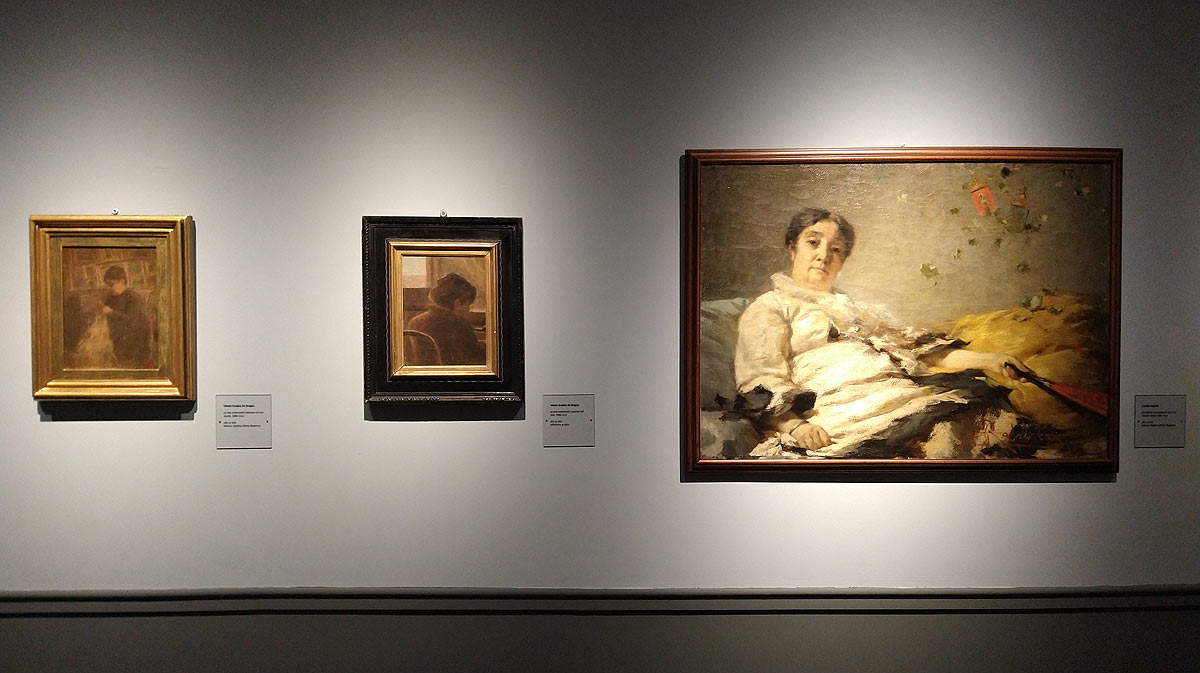
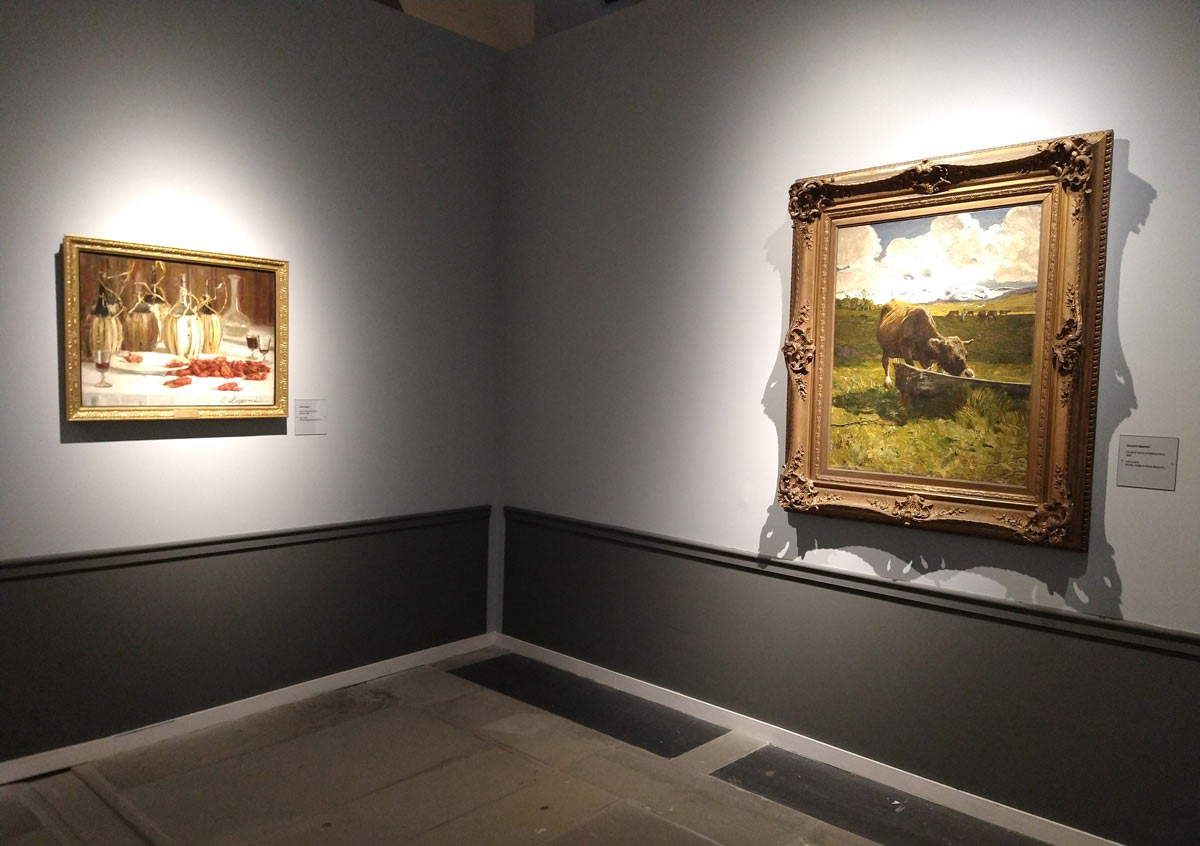


The exhibition’s chronological itinerary begins at Vittore Grubicy’s home and shows the public the private Grubicy at the beginning of his career, with ample space devoted to the painter’s mother, Antonietta Mola, to whom the artist was linked throughout his life, continuing to address her with tender endearments even as an adult. In the fine essay that, in the catalog, Sergio Rebora dedicates to Grubicy’s women, the centrality of mamma Antonietta in the artist’s life and career is well emphasized: widowed very young, in 1870, with six children to support, she did not lose heart and with tenacity, despite the economic straits into which the Grubicy family, previously well-to-do, had plunged after the disappearance of the pater familias Alberto, she managed to keep the family together. To give an idea of the relationship that bound Vittore and Antoinette, Rebora publishes an excerpt from a 1904 letter of which, the editor writes, “the lost, almost boyish tone with which a man who had passed his fifties, at other times a lucid and fulminating intellectual, addressed his 80-year-old mother is striking.” This is what the artist wrote to her during a seaside stay in Santa Margherita Ligure: “Also today mommy dearest I am sending you a kiss just to tell you that I work a little bit growing up and therefore decreasing my walks. However, I bathe every day and this I know and I know will do me good.” The mother is the real protagonist of the first section of the exhibition, captured by her son in the portraits that show her while sewing or going about her daily activities, and a painter herself, self-taught like Vittore, the author of some portraits of friends and family, some of which are in the exhibition, made to supplement her income (“with the hoped-for income,” writes Rebora, “Mrs. Grubicy hoped, a little naively, to be able to indulge in some holidays”). Domestic, reposed works: those of Vittore are surprising for an immediacy that is hardly found in other productions of the Milanese artist, those of Antoinette are sweet and delicate expressions (we could almost consider them naïve works ahead of the letter) of a mother so attached to her son that she tried to imitate his activity.
It is up to the second section to introduce the visitor to the figure of Grubicy, an art dealer and discoverer of promising young artists.Vittore Grubicy began working in his early twenties in Pietro Nessi’s gallery, later taking it over in 1876 and giving it his own name. The Grubicy Gallery began to weave high-profile relationships outside Italy as well (with Holland, in particular: a portion of the exhibition, as will be seen, is devoted to the artist’s Dutch sojourns) and, above all, to position itself as a center for the dissemination of the avant-garde of the time. Niccolò D’Agati recalls that Grubicy’s success as a merchant was also due to his “participation, almost totalizing [...] in the lives of the artists on whom he invested”: with them, he forged relationships that went far beyond the mere commercial relationship. Emblematic in this sense is the case of Giovanni Segantini, who can almost be considered to have been “discovered” by Grubicy, whom the painter from Trentino always considered a sort of mentor: not to be missed is one of Segantini’s masterpieces, the Brown Cow at the Trough, among the pinnacles of his production and among the most important works in the Livorno exhibition. Long friendships were those cultivated with the two champions of the Scapigliatura movement, Tranquillo Cremona and Daniele Ranzoni, of whom two highly illustrative portraits of their production ( L’amor materno and a Ritratto di giovinetta, respectively) are exhibited side by side. However, it is above all the artists who can be compared to pointillism that Grubicy expends most energy on: Angelo Morbelli is present in the exhibition with one of his Happy Dawns, and for the public less familiar with this current, it will be a surprise to see the singular portraits of Serafino Macchiati and the landscapes of Achille Tominetti, dense with evocative lyricism and capable of serving as a sort of introduction to Grubicy’s poetics, which will be explored in the following rooms: Tominetti came from a family originally from Miazzina on Lake Maggiore, a mountain village that would become Vittore Grubicy’s place of choice, and where his best work would be born.
The painter Grubicy begins to show himself in the next section, centered on his links with Japanese art: he was not only an interested collector of it (one room lines up some pieces from his ukiyo-e collection: it will be necessary to remember that the 1880s and 1890s marked the height of Japanism, a theme effectively investigated by a fine exhibition held between 2019 and 2020 in Rovigo, curated by Francesco Parisi), but he also knew how to draw cues from it that he poured into his pictorial production. The close-up and almost geometric view of A bordo della Magnina or La vela, one of the masterpieces of the Fattori Museum in Livorno (also on view, though in the next section, are Alba di lavoro and Alba di signori, two small-format paintings that the artist decided to relate to La vela, to compose a triptych), or the bright reds of Nocturne at Scheveningen, and again the tendency toward two-dimensionality that characterizes two works of great quality such as Winter in the Mountains and When the Little Birds Go to Sleep are some of the elements Grubicy learns from the lesson of the Japanese: on this basis, the painter then implants his characteristic divided brushstrokes and especially his atmospheric effects that charge the landscapes with poetry.
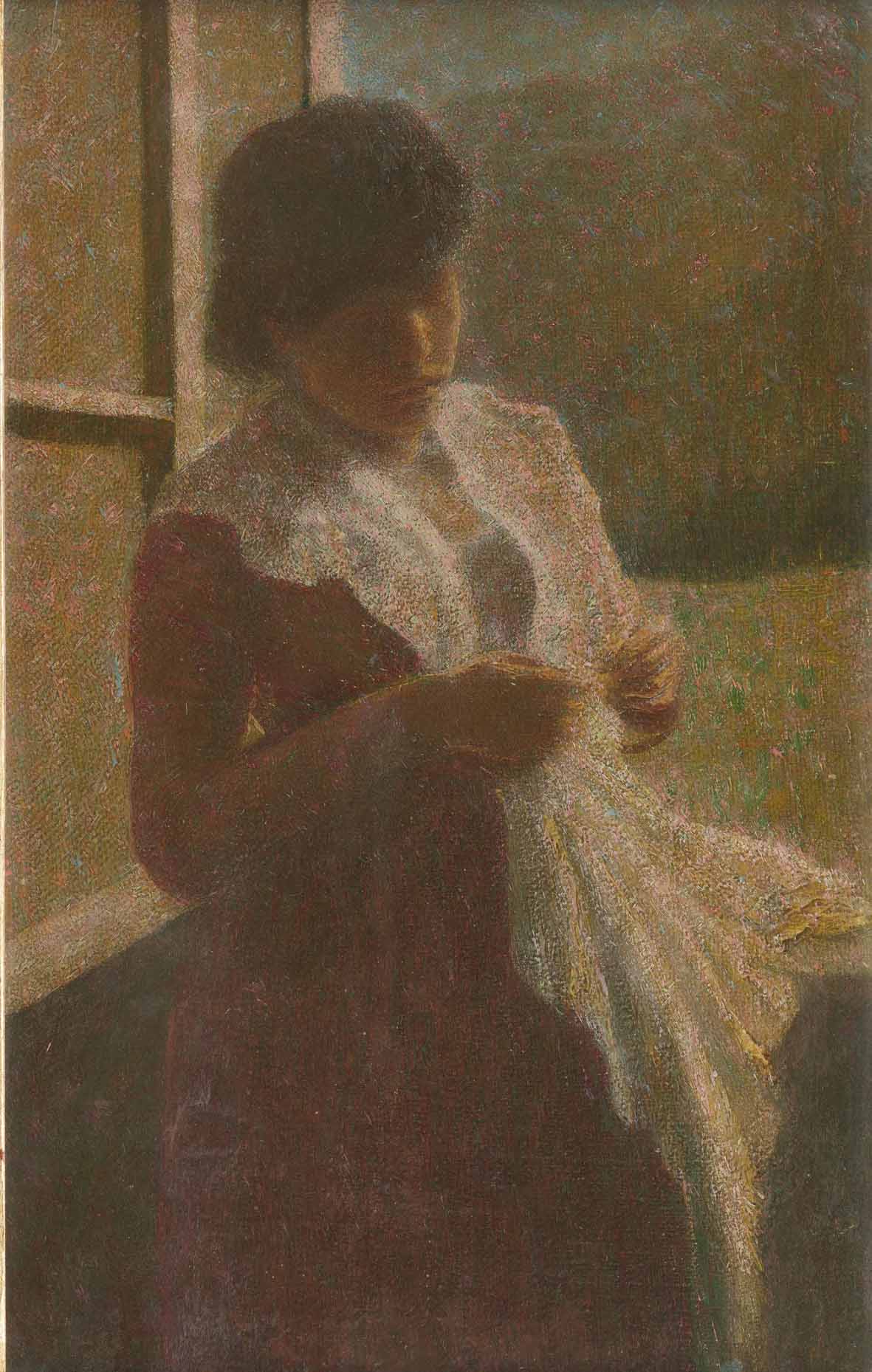
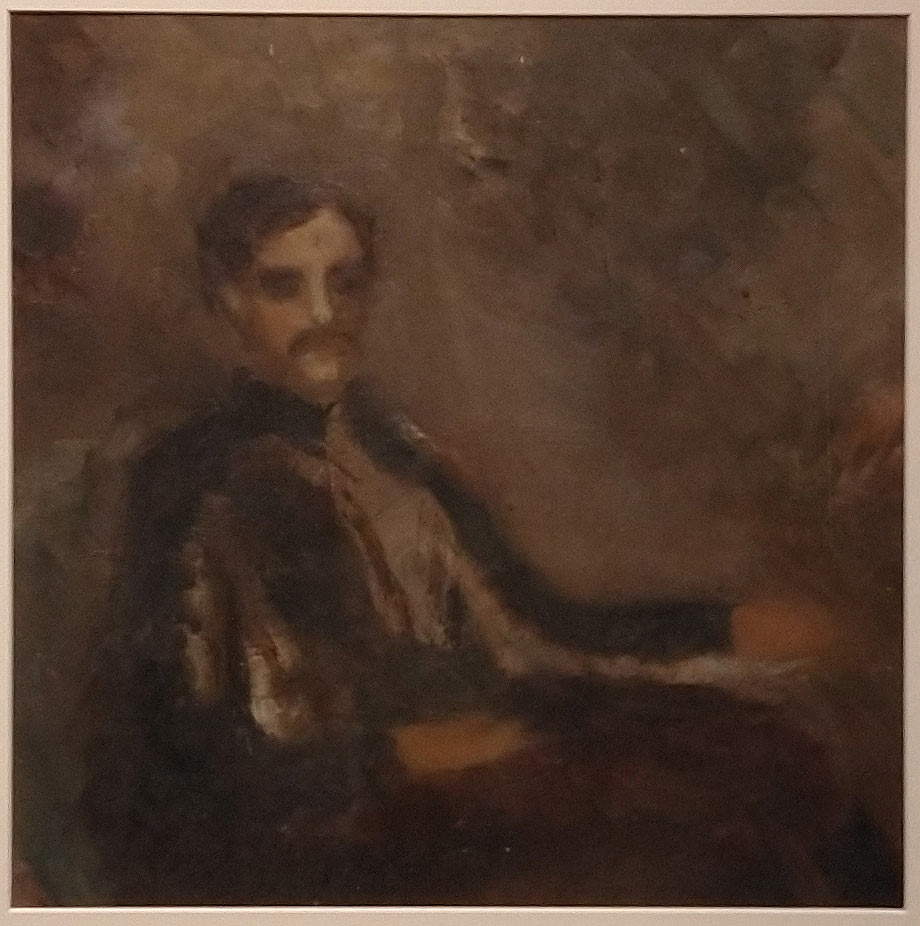


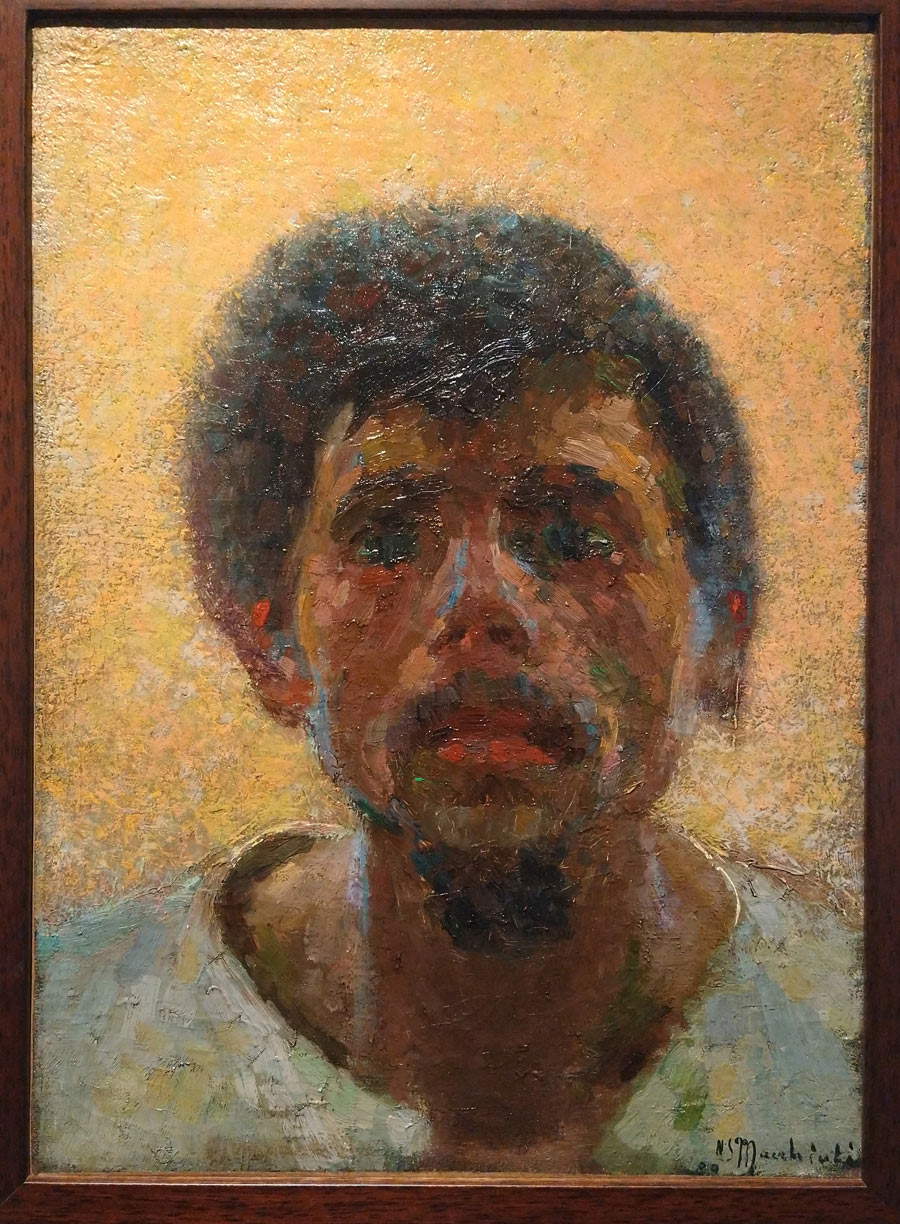


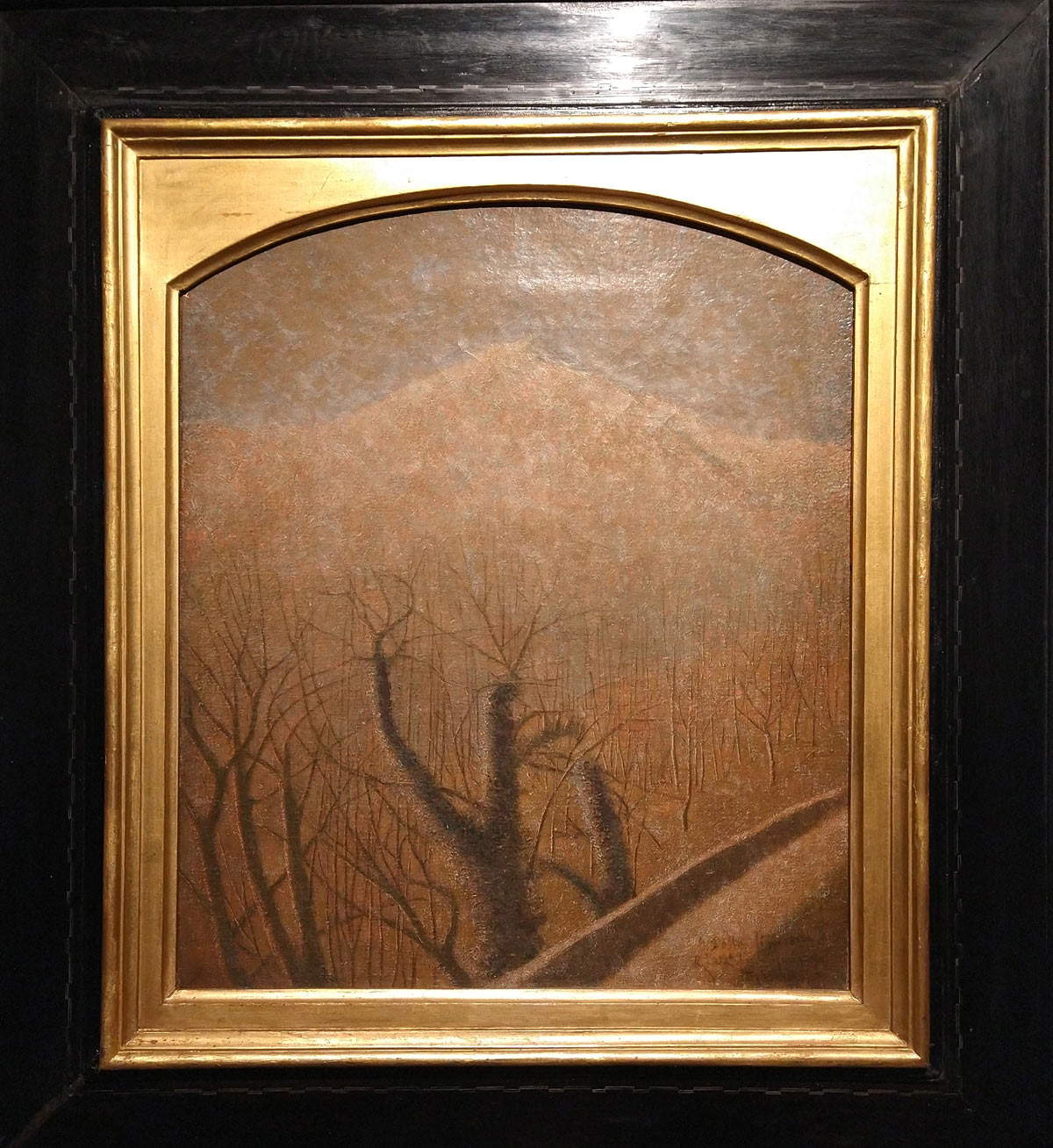

Vittore Grubicy is, indeed, one of the Italian masters of landscape-state-of-mind poetics: few others have been able to translate into images, with the same intensity as Grubicy, the celebrated maxim from Henri-Frédéric Amiel’s Journal intime that “un paysage quelconque est un état de l’âme et qui lit dans tous les deux est émerveillé de retrouver la similitude dans chaque détail.” At the 2005 exhibition on the Milanese painter held at the Museo del Paesaggio in Verbania, also curated by Rebora, Grubicy was called, in the subtitle, a “poet of pointillism.” a passionate admirer of Fontanesi, convinced that “poetry, indeed the religion of the good and imperturbable Nature could and should have more deeply convinced and enthusiastic priests than the usual and now numerous copiers of the landscape” (so wrote the artist in 1910), animated by his spirit as an experimenter, Grubicy was moved by the intention to render the “music” he felt in his soul before nature, as he would confide to Benvenuti. And so here is the product of this feeling, here are his “little children,” as he called his paintings, arranged along the central corridor of the first floor: a rich anthology that from the 1980s reaches the extreme stages of his career, crossing seasons, changes of direction that are never sudden but nonetheless perceptible, research that results from the “transcription of an internal vision, of a re-enactment of the pleasure and emotion felt in the presence of Nature.”
The first “symphonies” (this is also how Grubicy sometimes referred to his paintings) of the 1980s are decisively affected by the Dutch experiences: they are mostly small or very small-format works that pose as fast, direct-take images, still linked to typical modes of Impressionism, created in the moment, directly on the place that gives the artist inspiration. This is the case, for example, in paintings such as L’afa dell’estate sta per tramutarsi in autunno, or In treno presso Calolzio. In the 1990s, the approach to landscape experiences changes: no longer rapid impressions, but more thoughtful and evocative images, characterized by intense atmospheric effects. Sunrises and sunsets abound, with the glare of the sun exalted by the divided brushstroke: the skies are thus charged with a poetic light that revisits the landscape in an emotional key, as happens in Alla sorgente tiepida, a painting that for its effects and its poetry can be compared to the famous cycle of Poema invernale, and which is among the most beautiful paintings in the Livorno exhibition. Or as it is in The Last Beat of the Dying Day, with the fiery red of the sky and the backlighting of the logs in the foreground, all still mindful of Japanese prints. Even the human figure, in these landscapes, has the function of evoking a mood: the melancholy woman bent over washing clothes in the stream in At the Warm Spring, the lady strolling in the sun in the canvas Fiumelatte from the Joyful Sensations series.
The corridor closes with a re-enactment of Grubicy’s home to account for his passion for the decorative arts (ceramics and furniture complete the corner that transports everyone to the painter’s home), and leads into a room that documents, with paintings, prints, sculptures and drawings, the propulsive role played by the “Artistic Family.” an association founded in Milan in 1872, often frequented by Grubicy, who on several occasions exhibited at its shows (and then, after the break with his brother Alberto that sanctioned his departure from the gallery, became one of its most active supporters), and a further center for the dissemination of the new languages of the avant-garde, especially the Divisionist painters. The selection gives an account of the originality of the Family’s exhibitions: not only Grubicy’s landscapes-states of mind, but also the highest foreign achievements of Angelo Morbelli, who is present in the exhibition with Il parlatorio del Luogo Pio Trivulzio, one of the paintings dedicated to the sad conditions of the guests of the Milanese shelter, by Gaetano Previati (shocking his Ippopotami, for the astonishing effects of light that the Ferrara artist managed to create with a very banal pencil, suave and loving Madonna of the Chrysanthemums), Paolo Troubetzkoy who was among the greatest innovators in sculpture (and his Portrait of Alfredo Catalani proves it) and other notable artists. Retracing the corridor with Grubicy’s masterpieces backwards, one arrives at the section that delves into his Nordic sojourn: Alongside the impressions painted in front of the skies of Holland and Flanders (see Antwerp Sunset, a work from 1885, or the poignant Old Sea Captain for the first time marooned ashore, from the same year), parade the springs that inspired the artist, and here are works by painters such as Jacob Maris, Anton Mauve and others who, in addition to having become Grubicy’s friends in many cases (on some paintings you will be able to see the double signature), represented the most advanced points of their school.
The friendship between Vittore Grubicy, Arturo Toscanini and Leonardo Bistolfi, on the other hand, is the subject not only of a rich essay in the catalog by Alessandro Botta but also of a room in the exhibition: Toscanini was introduced to Grubicy by Bistolfi (who had known the conductor since the 1980s) in 1911, and the meeting sanctioned “what can be read as the beginning of a fellowship destined to mark the artistic and human affairs not only of the older painter, but of the musician himself,” Botta writes. The relationship between the two continued, in fact, until Grubicy’s passing. Toscanini loved the Lombard painter’s emotional rendering of landscape: this is evidenced by the fact that one of the first works he wanted for his collection was Un addio, a work from the 1980s that is among the most moving in the exhibition. Documenting the friendship between Bistolfi and Grubicy, however, are mainly two works, Impression of a Village by the Piedmontese and Novembre by the Lombard, which the two exchanged: it is interesting, moreover, to note how Bistolfi’sImpression succeeds in testifying to a certain commitment on the part of its author to landscape painting, a little-known strand of his production. The last room, on the other hand, celebrates the union between Grubicy and Leghorn, with a sequence of works by Labronian artists who revisit the legacy of the master: the lesson is learned above all by Benvenuto Benvenuti, who renders the image of a blazing summer on the Tuscan coast in his triptych of Sensazioni luminose (Luminous sensations), and goes even further with the highly experimentalism of Mattino sul mare (Morning by the sea ) of 1907, which verges on abstraction, and then returns to the ranks with the nocturnes of Cimitero degli angeli (Cemetery of the angels). Also well represented is the other Leghorn artist, Adriano Baracchini Caputi, who is closer to the atmospheric values of the master (in this regard, one admires the Crepuscolo that arrives on loan from the Galleria Nazionale d’Arte Moderna e Contemporanea in Rome). The farewell is entrusted to the large marble portrait of Grubicy executed by Adolfo Wildt, which seals the Milanese artist’s bond with the city: it was in fact commissioned from Wildt by Benvenuti in 1922, after Grubicy’s death.
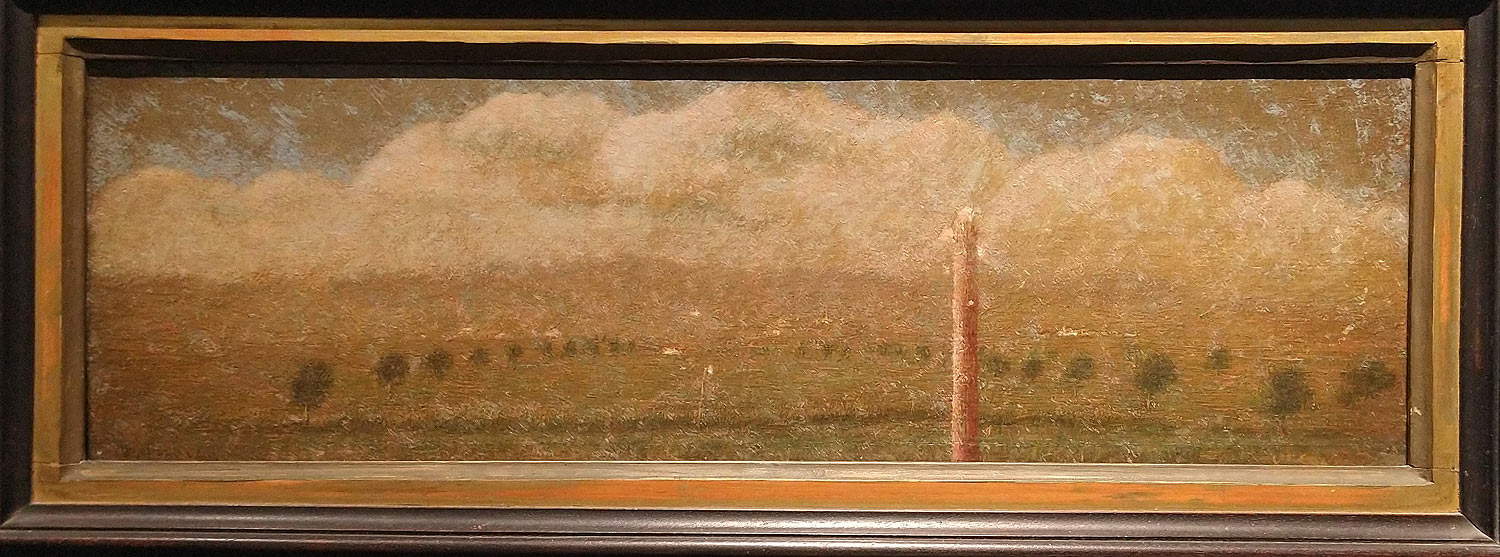
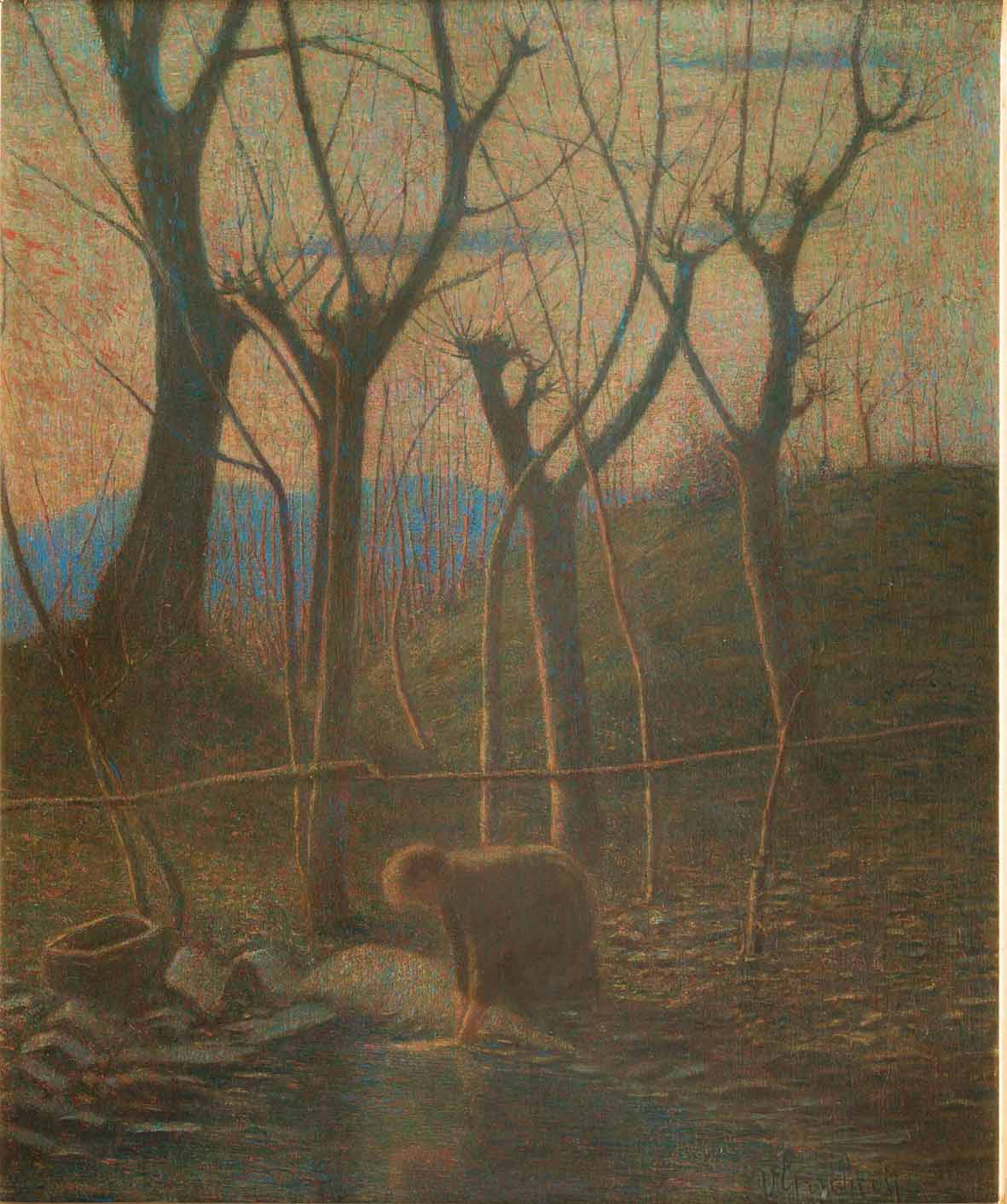

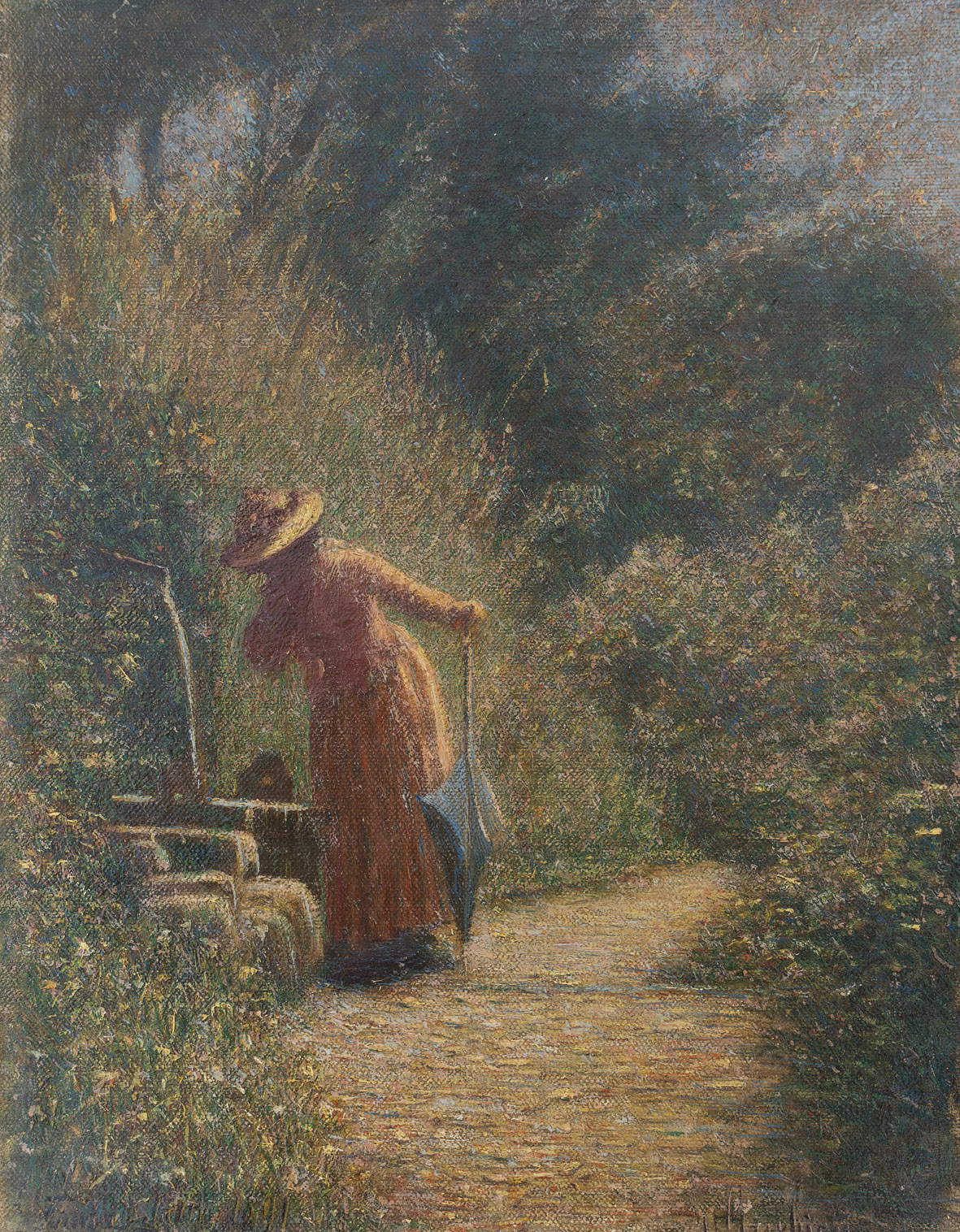
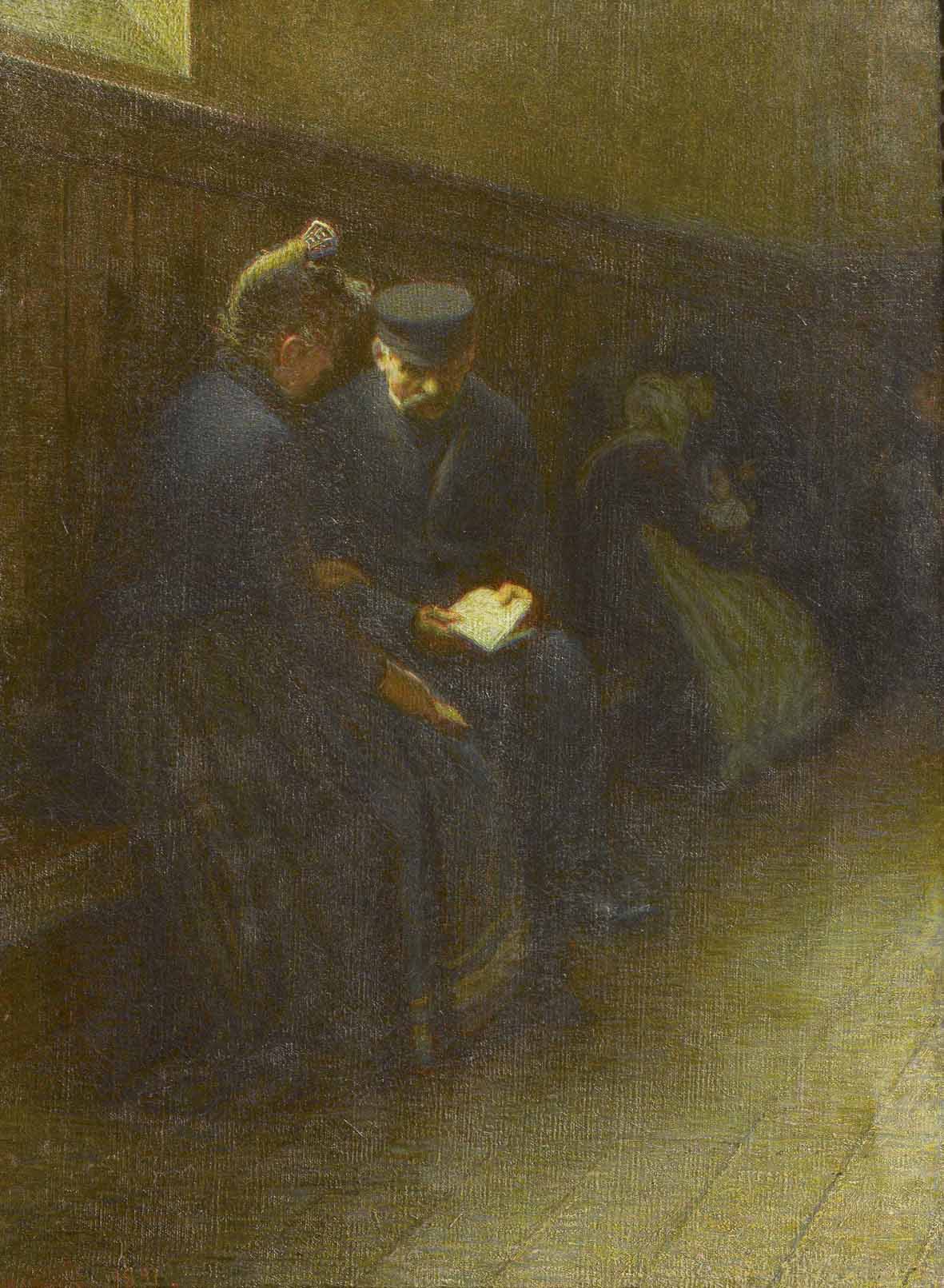
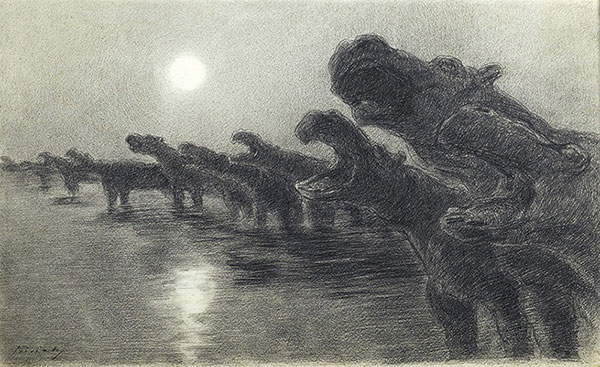
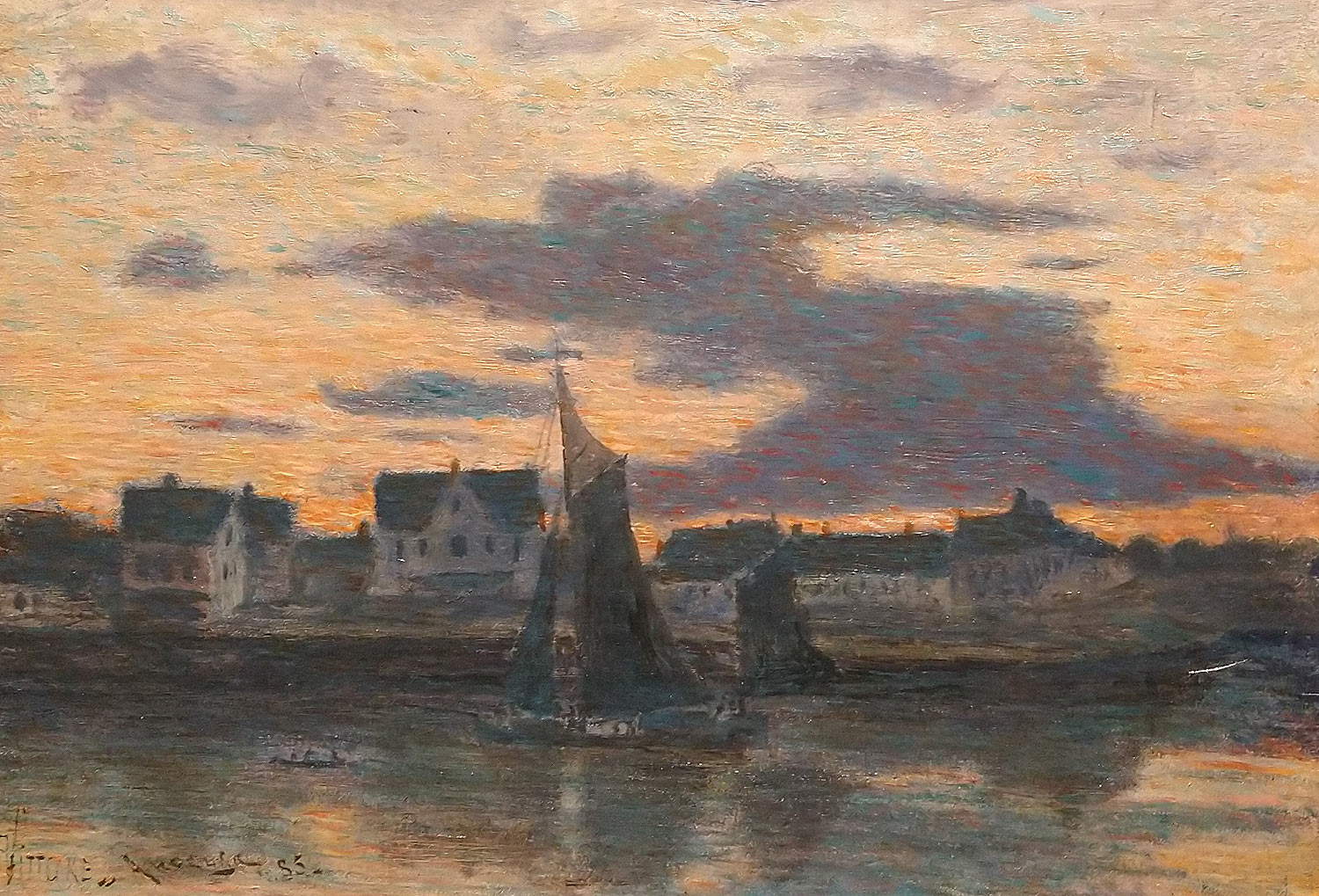
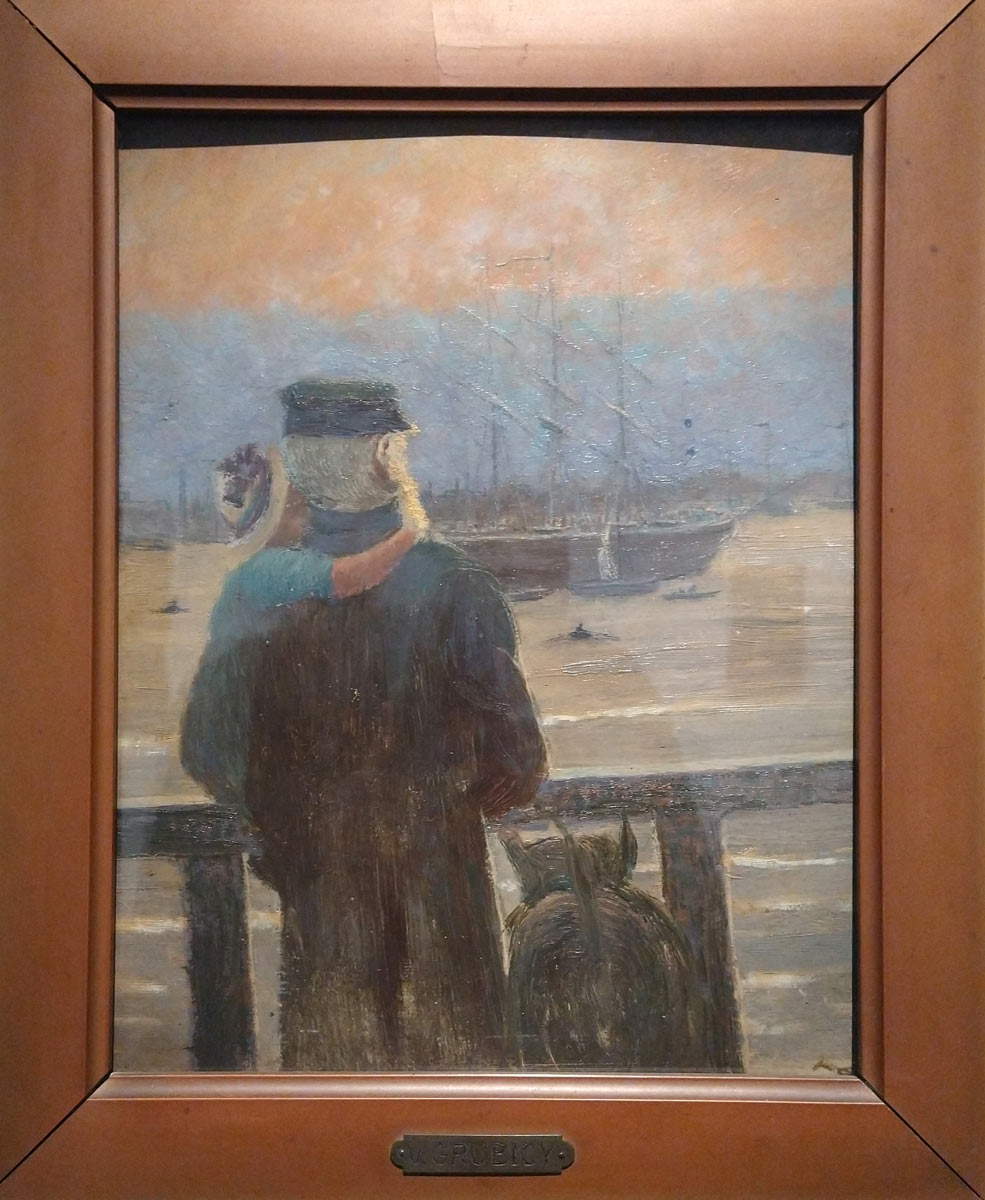


The image of Grubicy that is delivered to us by Wildt’s bust somewhat clashes with the one that the visitor gets from the exhibition’s itinerary, even when looking at photographs and self-portraits of the artist: how elegant, of refined tastes, sometimes delicate, and inclined to companionship the real Grubicy was, how severe and almost repelling Wildt’s is. The slightly wrinkled eyelashes however also convey to us the image of a dreamer firm and immovable in his idea of beauty and feeling, for which he spent an entire career. It would be a long time before this idea of his was recognized: Grubicy, like many other artists, was also affected by the hasty judgments that the critics between the two wars, and to some extent also the subsequent ones (and on him weighed the fact that he was not only a painter, but also a critic and gallery owner: a combination of professionalism that was hardly admissible for the mentality of the twentieth century), developed of the experiences of the pointillists and in general of the Italian nineteenth century. The rediscovery of Grubicy and colleagues could only begin again in the late 1960s: today, beyond his role as the highest Italian exponent of the paysage-état de l’âme, he is also credited with having spread research on color theory in Italy, and with having promoted artists who, like Segantini, we might not have known without his contribution.
From the Livorno exhibition, enriched, moreover, by a catalog that stands as a new and updated monograph (it would have been nice to see it enriched by a chapter with a critical anthology, since especially his contemporaries wrote a great deal about him), there emerges, therefore, for real, the figure of an “intellectual-artist,” as per the title of the review, without whom many experiences would perhaps have known different and lesser impulses. More than fifteen years after the first monographic exhibition dedicated to him in a public museum, the above-mentioned one in Verbania, the Museo della Città’s exhibition fully restores that “complex and fundamental” personality, as Sergio Rebora defined him at the time, multifaceted and passionate, the singer of a painting that tended to give form to the idea more than to reality, and decisive for the evolution of Italian art at the dawn of the new century.
Warning: the translation into English of the original Italian article was created using automatic tools. We undertake to review all articles, but we do not guarantee the total absence of inaccuracies in the translation due to the program. You can find the original by clicking on the ITA button. If you find any mistake,please contact us.